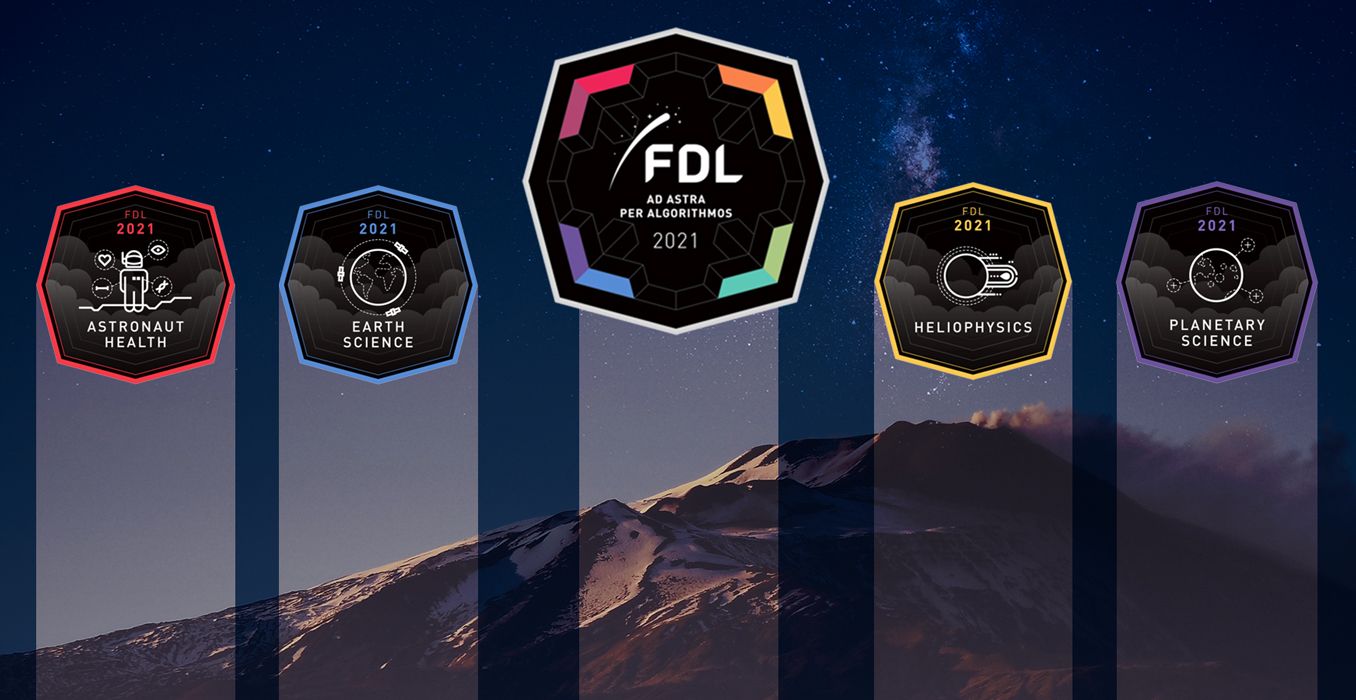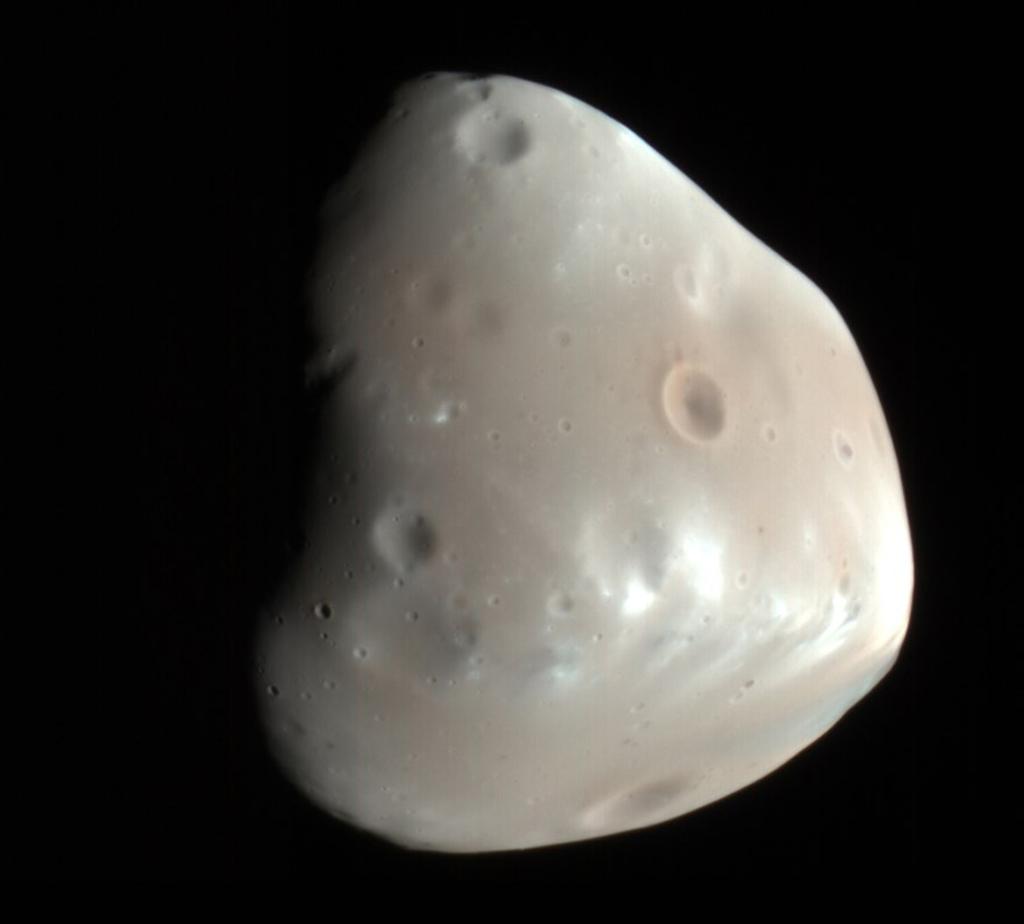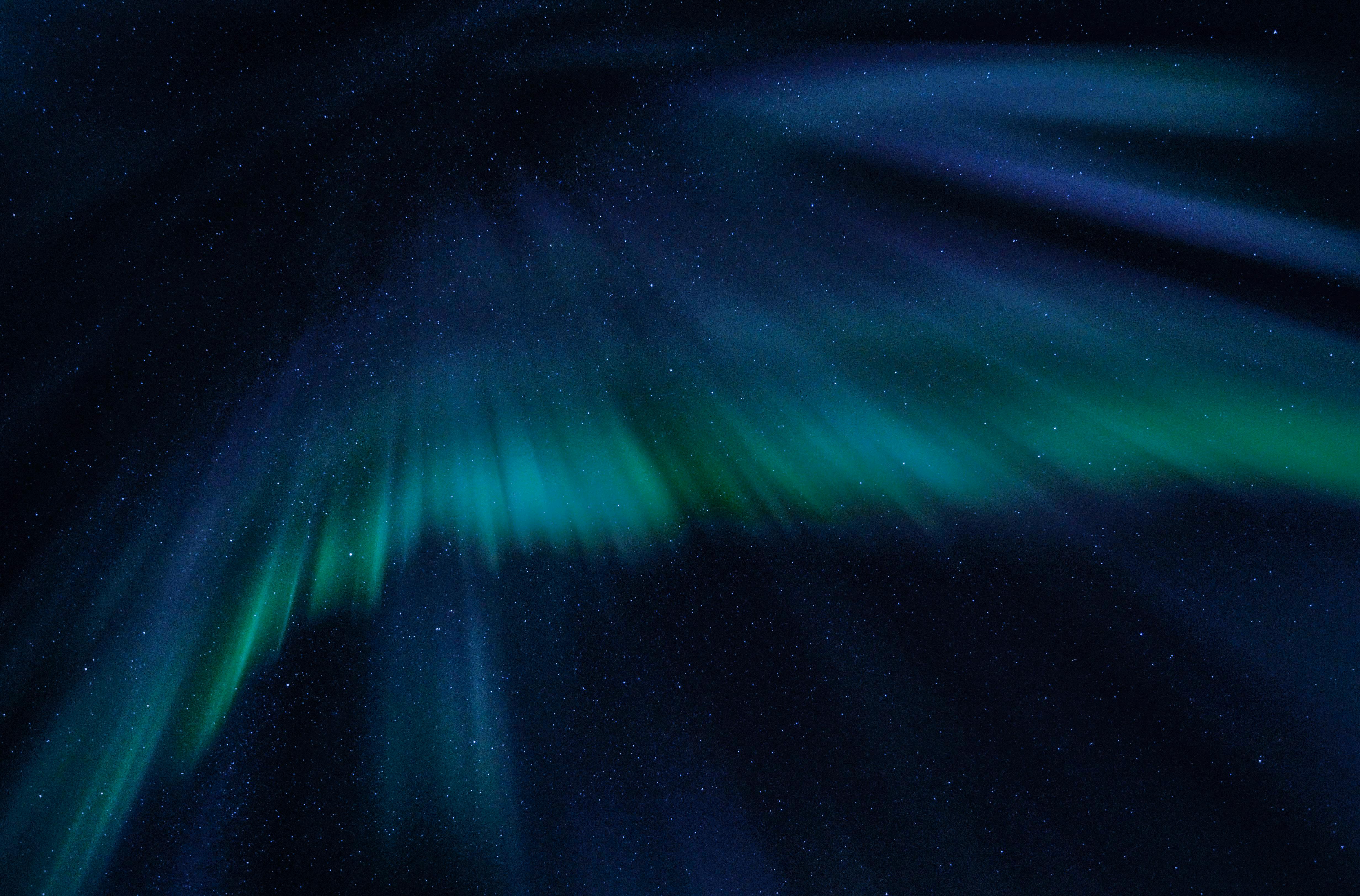Tim Russ Helps Detect Asteroid Patroclus
Star Trek: Voyager actor Tim Russ participates as a citizen scientist to detect asteroids in support of NASA’s Lucy mission that will be the first to visit the Trojan asteroids. Russ and five other citizen astronomers contributed to detecting Petroclus, which is in orbit around Jupiter.
Russ participated in the effort using the using the Unistellar eVscope. Unistellar and the SETI Institute are in partnership to facilitate these kinds of citizen science campaigns.
Russ helped detect Patroclus using a Unistellar eVscope and eQuinox telescope, a computerized telescope with a built-in GPS that connects to any cellphone.
“It will simply find a starfield on its own and it will figure out where it is. You just punch in the object you want to go see,” Russ says.
 Frontier Development Lab Infuses Machine Learning into Science
Frontier Development Lab Infuses Machine Learning into ScienceGoogle Cloud’s involvement with the Frontier Development Lab (FDL) helps optimize and increase the availability of Artificial Intelligence (AI)/Machine Learning (ML) in the sciences with access to immense super-computer resources.
FDL tackles knowledge gaps in space science by pairing ML experts with researchers in physics, astronomy, astrobiology, planetary science, space medicine and Earth science. These researchers have utilized Google Cloud compute resources and expertise since 2018, specifically AI / ML technology, to address research challenges in areas like astronaut health, lunar exploration, exoplanets, heliophysics, climate change and disaster response.
With access to compute resources provided by Google Cloud, FDL has been able to increase the typical ML pipeline by more than 700 times in the last five years, facilitating new discoveries and improved understanding of our planet, solar system and the universe. Throughout this period, Google Cloud’s Office of the CTO (OCTO) has provided ongoing strategic guidance to FDL researchers on how to optimize AI / ML, and how to use compute resources most efficiently.
“When I first met Bill Diamond and James Parr in 2017, they asked me a simple question: ‘What could happen if we marry the best of Silicon Valley and the minds of NASA?'” said Scott Penberthy, director of Applied AI at Google Cloud. “That was an irresistible challenge. We at Google Cloud simply shared some of our AI tricks and tools, one engineer to another, and they ran with it. I’m delighted to see what we’ve been able to accomplish together – and I am inspired for what we can achieve in the future. The possibilities are endless.”
 It’s COSMIC at the VLA
It’s COSMIC at the VLAThe Very Large Array (VLA) radio telescope may get an upgrade. Included is an agreement with the SETI Institute to analyze VLA data to look for artificial extraterrestrial signals – the new Commensal Open Source Multimode Interferometer Cluster (COSMIC) system.
The VLA will be part of a massive ongoing SETI search. And the SETI Institute will be part of a team using this instrument in “piggyback” mode for extended periods of cosmic surveillance. In an acknowledgement of a time-honored SETI tradition, the observing setup – being developed by astronomers in both the U.S. and Canada – is canonized with a catchy acronym: COSMIC (Commensal Open-Source Multimode Interferometer Cluster.)
“What the SETI system does is it searches … to see if it can detect a steady signal,” Murphy said. “While the normal observation is looking at this distant galaxy … these powerful back-end systems sit on the end of the telescope, and just continuously watch the data signal going forward. … It is constantly gathering data all the time.”
 Tiny Mars Moon May Disappear
Tiny Mars Moon May DisappearLittle Phobos, one of the two small moons of Mars, may have a lifecycle starting from ring rubble to small body and disintegrating back into a ring around the red planet. SETI Institute scientists used data from Mars’ other moon, Deimos, to propose this scenario.
The fact that Deimos’s orbit is not exactly in plane with Mars’s equator was considered unimportant, and nobody cared to try to explain it,’ said astronomer Matija Ćuk of the SETI Institute.
‘But once we had a big new idea and we looked at it with new eyes, Deimos’s orbital tilt revealed its big secret.’
 Lightspeed
LightspeedWe throw around this term, but what does it really mean, and why is it important? And can we get around the physics to zoom into warp speed?
“If Captain Kirk were constrained to move at the speed of our fastest rockets, it would take him a hundred thousand years just to get to the next star system,” said Seth Shostak, an astronomer at the Search for Extraterrestrial Intelligence (SETI) Institute in Mountain View, California, in a 2010 interview with Space.com’s sister site LiveScience. “So science fiction has long postulated a way to beat the speed of light barrier so the story can move a little more quickly.”
 Is ET AI?
Is ET AI?Looking at the development of technology on Earth suggests the possibility that any extraterrestrial intelligence we may find among the stars is from artificial intelligence rather than biological creatures. This possibility would require SETI experiments different than the ones used to find life on habitable planets or moons.
This climate could be a major draw because thermodynamics implies that machinery will be more efficient in cool regions that can function as a large “heat sink”. A Bok globule’s super-cooled environment might represent the Goldilocks Zone for the AI powered machines, said [Seth] Shostak. But because black holes and Bok globules are not hospitable to life as we know it, they are not on SETI’s prime target list.
“Machines have different needs,” he says. “They have no obvious limits to the length of their existence, and consequently could easily dominate the intelligence of the cosmos. In particular, since they can evolve on timescales far, far shorter than biological evolution, it could very well be that the first machines on the scene thoroughly dominate the intelligence in the galaxy. It’s a “winner take all” scenario.”
Join hosts Seth Shostak and Molly Bentley each week as they explore emerging science and technology research.
Platypus Crazy
They look like a cross between a beaver and a duck, and they all live Down Under. The platypus may lay eggs, but is actually a distant mammalian cousin, one that we last saw, in an evolutionary sense, about 166 million years ago.
Genetic sequencing is being used to trace that history, while scientists intensify their investigation of the habits and habitats of these appealing Frankencreatures; beginning by taking a census to see just how many are out there, and if their survival is under threat.
With guests Josh Griffiths, Jane Fenelon, Paula Anich, Wes Warren, Phoebe Meagher
Skeptic Check: Anti-Vax
They were developed in a matter of months, and they’re 90 percent effective at stopping infection. They protect against serious illness or death. And yet, roughly one-third of Americans refuse to get the Covid vaccine.
How can this be? How could something that our ancestors would have considered a miracle be refused by so many? The reasons are many, and not all are because of an anti-vax attitude. We talk to health professionals to learn what’s stopping the public from stopping the pandemic.
With guests Paul Offit, Tanagne, Haile-Mariam, Nsikan Akpan
More Big Picture Science episodes can be found at http://bigpicturescience.org/episodes.
SETI Live
SETI Institute hosts interview cutting-edge scientists each week on social media. Recent SETI Live episodes include:
REU: The Search for Technosignatures with TESS
Dr. Ann Marie Cody uses space telescope data to study variability associated with stars and the material surrounding them. This summer, she and her student Marlee Rapp are working with data from NASA’s Transiting Exoplanet Survey Satellite (TESS).
TESS has observed tens of millions of stars over the past few years, many of which have variable light output. This variability comes from a variety of sources, including eclipsing binary star systems and dark spots on the spinning stellar surface. Cody is particularly interested in stars that display pronounced fading events, as these usually indicate occulting material surrounding a star.
It has even been proposed that if intelligent civilizations exist in our galaxy, they might place artificial energy harvesting structures into orbit around their host star. We could then detect them by watching the stellar brightness dim each time a structure passed in front of the star. Cody and Rapp are now developing algorithms to search for such “technosignatures” among the stars monitored by TESS. The most intriguing and anomalous targets identified through this analysis will then be followed up with ground-based telescopes, including radio observatories dedicated to SETI searches.
Tracking Lightning from Space to Predict Weather on Earth
Lightning flashes can be excellent predictors of incoming storms, tornadoes, and other severe weather events and are used by meteorologists to warn local communities of oncoming severe weather many minutes in advance, protecting infrastructure and human lives. NASA’s two Geostationary Operational Environmental Satellite (GOES) spacecraft have cameras dedicated to capturing emitted light on Earth. This camera, known as the Geostationary Lightning Mapper (GLM), captures and records the intensity of light on any camera pixel with a brightness above a certain threshold. These records are considered a single “event” and are downlinked to receivers back on Earth. The Frontier Development Lab’s Lightning Upgrade team seeks to achieve a greater classification accuracy of true lightning events by applying machine learning algorithms to GLM data.
Using Machine Learning to Build a More Food Secure Future
Food insecurity remains an urgent development challenge: 750 million people worldwide are severely food insecure, and climate change is causing food production to be less predictable. Machine learning and earth observation are helping to guide the interventions of NGOs like the World Food Programme. However, in many countries in the Global South, a scarcity of labeled data prevents the successful application of these methods. Frontier Development Lab has been working with the World Food Programme to develop self-supervised embeddings in data-scarce countries, significantly enhancing the available information in these countries and reducing the time and cost overheads of field surveys. We have built a scalable data pipeline to obtain years’ worth of Sentinel-2 imagery over hundreds of thousands of square kilometers in mere minutes. Our self-supervised machine learning model produces embeddings which we are using to map the foodscape and even classify crop types.
Improving Disaster Response on Earth with Satellites in Space
The number of satellites observing the Earth is growing exponentially, collecting increasing amounts of data critical for scientific purposes and risk assessment. Provided with dedicated processors, these satellites can also be turned from simple remote sensors to intelligent actors. Indeed, running ML models directly on board of spacecrafts presents a real opportunity to accelerate knowledge extraction and ultimately decision making. Low latency predictions would benefit a variety of human activities, above all disaster response, by detecting floods and wildfires as an example. In this challenge, we tackle the fundamental task of detecting whether a location has significantly changed over time so that its data is prioritized for downlink and verification. Our analysis not only assesses the quality of the knowledge extracted by our model but also its suitability for deployment on board, due to specific computational constraints.
How Could We Find Life Beyond Earth?
Dr. Dave Summers investigates a wide range of chemical reactions that are needed for life to begin, that may affect whether life can exist, or that might be used by scientists to recognize life somewhere beyond Earth. We are studying the detection of biomarkers – organic compounds that represent biosignatures of life – in mineral samples. Dr. Summers and his REU (Research Experience for Undergraduates) student, Carla Colon, study where they can be found, how they can be found, and why they are there. This is so we can better search for biosignatures when we look for life on Mars.
Searching for Extraterrestrial Civilizations with the Allen Telescope Array
Dr Wael Farah uses radio telescopes to search for, and study, radio transients and pulsars. Transient events include potential technosignatures of extraterrestrial civilizations, appearing as anomalies in radio data. Other transient events also include objects called “Fast Radio Bursts” (FRBs), super-bright flashes of extragalactic origin but of unknown cause. Learn how Farah and Madeleine King, one of the REU (Research Experience for Undergraduates) students, have been using the ATA and how it may become one of the best instruments in the world for radio searches.
How AI and Machine Learning Can Support Future Space Missions
There are many upcoming space missions from robotics to human spaceflight and so much for us to explore. Join our conversation with some of our Frontier Development Lab (FDL) partners about these future missions and how machine learning can play a part in the future of space exploration and how they are helping. SETI Institute President Bill Diamond and FDL Executive Producer Sara Jennings will chat with leaders from Blue Marble Space Institute of Science, Luxembourg Space Agency, Intel, the Institute for Simulation Intelligence.
Videos of all past Facebook Live events can be found on our Facebook page, https://www.facebook.com/SETIInstitute/, or on our YouTube channel, https://www.youtube.com/SETIInstitute.
from WordPress https://ift.tt/3hD02wg
via IFTTT

No comments:
Post a Comment